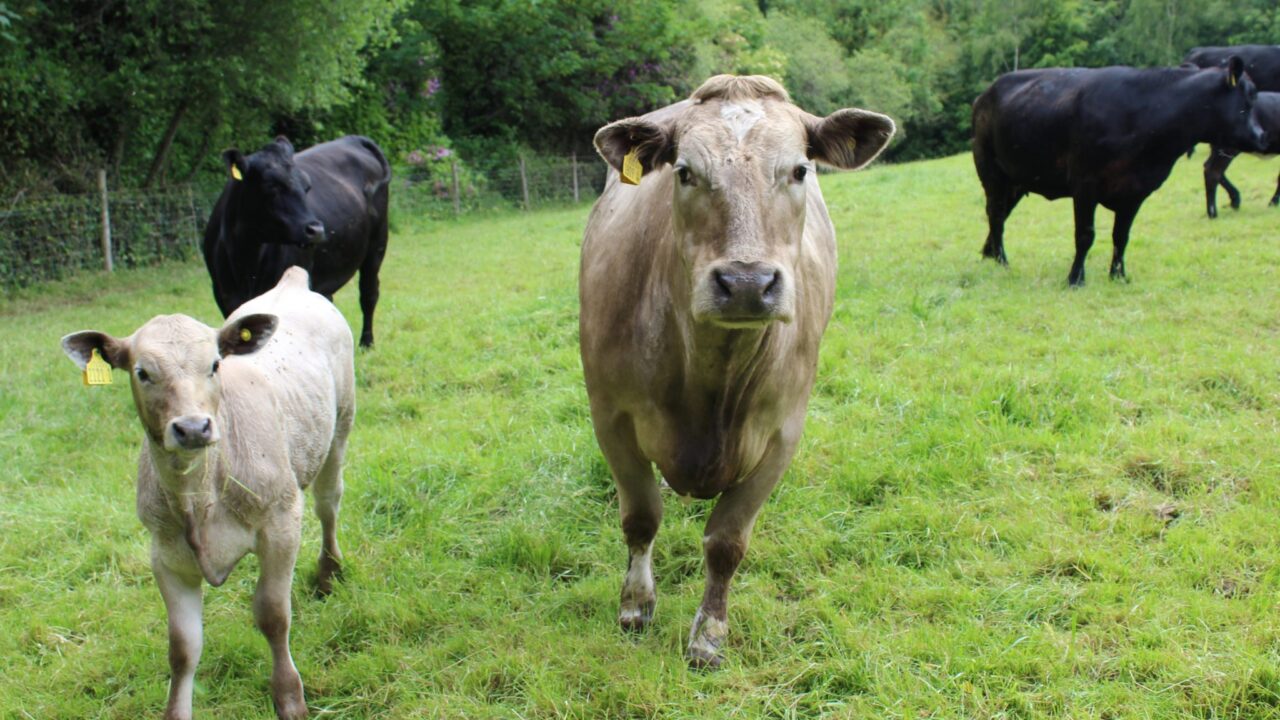The Agriculture and Horticulture Development (AHDB) has launched a new genetic tool that measures the potential of an animal to reduce the carbon footprint of suckler beef through improved herd efficiencies.
EnviroBeef combines results from the National Beef Evaluations (NBE) into a single metric that allows suckler beef producers to benchmark animals across all beef breeds for environmental impact.
The tool will also enable farmers to make breeding decisions to improve profitability and animal health and welfare, alongside reducing the carbon footprint of their herd.
AHDB lead animal genetics expert, Harriet Bunning, said: “The suckler industry is under pressure to reduce emissions.
“Unlike other approaches which may have ongoing costs to farmers, using existing data to breed a more efficient herd is a win-win.
“A more efficient herd will be more profitable as well as producing beef with a lower carbon footprint, regardless of the system.
“Measures within the National Beef Evaluation such as productive lifespan and calf survival score well in EnviroBeef, which means using the tool will also have positive impact on the health and welfare of suckler cattle.”
Tool for beef herds
EnviroBeef scores can be found alongside National Beef Evaluation results.
An animal with a score of -10% means it has the genetic potential to reduce the carbon footprint of suckler beef by 10% compared to the GB average.
Alongside other criteria such as health and temperament, choosing an animal with the most negative EnviroBeef score can be used to make breeding decisions such as identifying the best bull to use, which cows to remove from the herd or which heifers to keep as replacements.
The National Beef Evaluations uses national data, including birth, death and calving data from the British Cattle Movement Service (BCMS) and carcass data from abattoirs.
This is used to build a family tree for animals using BCMS dam and sire data, alongside data from breed societies and milk recording organisations.
EnviroBeef measures the genetic potential of any animal where there is enough data to get to a reasonable level of accuracy, including bulls, cows and even growing and store cattle.
Harriet added: “The level of certainty of the EnviroBeef score is measured by its accuracy. This is a value between 0 and 100%.
“100% would mean that even with a large amount more data, we do not expect the score to change. You might see scores close to 100% with artificial insemination (AI) sires.
“Other animals will have lower accuracies, meaning that their EnviroBeef score is the best we can do with the current data, but as we receive more data, the score may change.
The AHDB has said that any EnviroBeef score with an accuracy greater than 0% is “better than a random guess”.
Suckler beef producer in Leicestershire, James Herrick said: “The carbon footprint of our herd is becoming increasingly important to us on farm and reducing it is something we take very seriously.
“I believe breeding better cattle and using the genetic tools and data we have available to us is a great way of doing that.
“The great thing about the National Beef Evaluation is I can compare cattle against other breeds and choose the cattle that are right for my system.
The ability to breed cattle that are more carbon efficient is important to our goals because if we can breed more efficient cattle that also helps our bottom line,” Herrick said.

